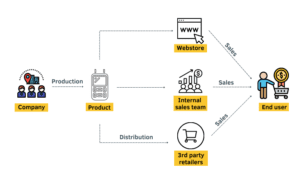Learning how to properly pitch is one of the most essential skills a founder needs to develop. That’s because when it comes to presenting your idea, you only have one shot to convince an investor.
Looking for funding or business partners is a crucial step when bringing innovation to the market. However, in today’s competitive business world, it can be difficult to reach the right people and organisations. Not to mention the difficulty to get their attention, and persuade them into supporting your project.
Learning how to properly pitch is one of the most essential skills a founder needs to develop. That’s because when it comes to presenting your idea, you only have one shot to convince an investor. To make sure you don’t waste it, the ideal pitch must contain all the essential information in a brief and compelling format. This can be challenging for knowledge intensive start-ups. Or even for teams lead by researchers who have to keep things simple for non-science people.
Pitching: from research to business proposition
At META Group, we have analyzed thousands of pre-seed pitch decks. We discovered not only the most efficient template for the deck, but also how to successfully tell your story to attract interest from investors. Remember: the goal is to tell your story clearly and succinctly. And doing it in a way that makes investors want to hear more and come back to you.
This article will provide you with guidelines on how to develop a 3–4-minute pitch. It will offer you hints for the content that you should include in your talk, with instructions on presentation styles, body language and PowerPoint guidelines. It will guide you through the art of keeping it simple and moving from a research project to a business proposition.
The Problem
The first thing to do when pitching is to directly present the problem and how the customer is experiencing it. This will allow you to quickly explain why your solution is needed and who your customers are. In a matter of 15-20 seconds, you will have set the stage for your solution.
The Solution
The next step after describing the problem is explaining how you are going to solve it, so introduce the solution and its features.
The Value Proposition
An essential element of the pitch is explaining the value proposition: why your solution is unique compared to other solutions.
The “Unfair Advantage”
It is now the time to explain how far you are in the process of developing the solution and how you and your partners are going to bring the product to market. Explain the current state of the solution, as well as the professional skills and experience of your team. It is important to show who you are. Which competences you have and especially. How you and your partners complement each other in day-to-day operational activities. You could have the solution for any problem. However, if people are not convinced that you are the right people to bring it to the market, it will not matter.
The Business Model
The next thing to highlight is how you intend to generate revenue with your solution: the business model. A good way to reinforce your speech, is to make a simple graphical illustration of your Business Model as shown below:

Next, the financial plan of the business proposition is the connection between costs and revenues. Develop revenue estimations for 12, 24, and 32 months and connect them to the costs you expect to incur in the same periods. In this way, you will demonstrate that you have a profound understanding of the back-end of your business, with revenues in the front-end.
Minimum Viable Product
One of the best ways to get your message through is by showing a prototype or presenting a Minimum Viable Product (MVP) – the simplest version of your product or service with just enough features to validate your value proposition.
Finally, explain what you want to achieve with this launch, and include a strong closing statement.
Other effective tips
With these guidelines in mind, you should be able to design a presentation that covers the most important elements. But there is more to a pitch than just content: body language and presentation style are also important.
Body language. Some people use their arms wildly, others walk around the stage or room, and some just stand still. This is all up to you. However, the more you rehearse and practice your pitch, the more likely is to feel less nervous and for your body language to be more natural. Try to balance your tone, speak clearly, and look the audience in the eyes.
Presentation style. Consider your personality type when presenting and try to take advantage of certain traits: energetic, funny, welcoming, professional, or something completely different. You need to have something that separates you from the rest and makes you memorable.
When it comes to the slide presentation, keep in mind that the audience is there to listen to you, not to read the text from the slides. Add some key bullet points to summarise the most important aspects of the presentation and combine them with good illustrative images. The slides’ role is to spark curiosity and help the audience visualize and understand key elements of the presentation. Not for you to remember the speech.
Pitching from research to market
Last but not least, find a way to present your research in a simple and understandable way. Avoid technical jargon and focus on the impact of the solution rather than the process. You may think that all the essential parts will be left out but remember that the pitch is about grabbing the attention of your audience.
Interested in learning more about pitching or receiving tailored support for your research-to-market journey? Contact our team.

